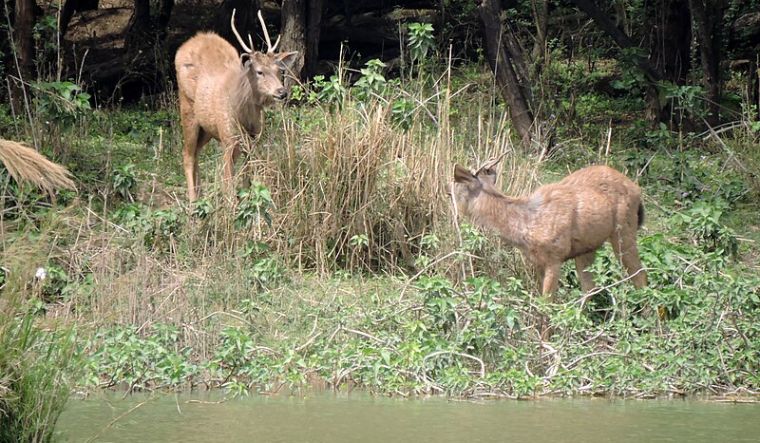Soon, the flora and fauna of the Sukhna wildlife sanctuary can heave a sigh of relief. After years of dilly-dallying by Haryana, the Centre has finally issued the draft notification demarcating an area of 1 km up to 2.035 km around the sanctuary on the Haryana side as an eco-sensitive zone (ESZ).
Envisaged in 2002 as part of the Wildlife Conservation Strategy, ESZs are areas with “natural resources of incomparable values” requiring special attention for conservation. They act as “shock observers” for protected areas and its inhabitants. Their role has also been found to be instrumental in stymieing environmentally detrimental development activities in such areas and reducing human-animal conflict.
The protected areas constitute 5.11 per cent of India's geographical area in the form of 106 national parks and 573 wildlife sanctuaries. More than 350 ESZs exists in India spanning 29 States and five Union territories. Together, protected areas and the ESZs cover more than 8.5 percent of India’s land.
The Sukhna Wildlife Sanctuary, spread over 25.98 square km, falls under the administrative control of Chandigarh and shares its boundaries with Haryana and Punjab. Located in the fragile Shivalik foothills, the ecologically sensitive sanctuary envelops Chandigarh’s iconic Sukhna Lake and its catchment area.
It is home to at least seven Schedule I animal species of the Wildlife Act, including leopard, Indian pangolin, sambar, golden jackal, king cobra, python and monitor lizard. The Schedule I species are considered endangered needing immediate protection.
Besides, there are Schedule II animal species like reptiles, butterflies, trees, shrubs, climbers, herbs and 250 birds species that inhabit the sanctuary. “...it is necessary to conserve and protect the area for its biodiversity,” states the Centre's draft notification.
This comes in the backdrop of years of delaying tactics by the state governments of Haryana as well as Punjab in demarcating appropriate area under ESZ. Both Punjab and Haryana have been adamant on restricting the ESZ at 100 metre. “It has become a widespread practise and general tendency of states and Union territories to try and limit the ESZ to bare minimum to avoid stringent regulatory provisions for their developmental projects around the protected areas,” said a source.
In 2020, the Punjab and Haryana High Court declared Sukhna Lake a living entity and directed the environment ministry to declare at least 1 km area from the sanctuary’s boundary in both states as the ESZ within three months. In 2019, the Supreme Court had scrapped an infrastructure project on the Punjab side citing the project land was in close vicinity of the wildlife sanctuary. The apex court in 2022 also placed the minimum ESZ at 1 km from the demarcated boundary of (all) protected areas. Later, however, demarcation of ESZs were made “area-specific” by the top court while maintaining a blanket ban on mining.
Despite such directions, both Punjab and Haryana have been slow in sending proposals to the enviornment ministry to notify ESZs around Sukhna Wildlife Sanctuary. As far as Haryana is concerned, the environment ministry reprimanded the state in 2021 for inordinate delay in submitting the proposal. Haryana pitched for a 100 metre ESZ towards their side in January 2023.
However, the Union ministry asked the state authorities to revise the proposal as per Punjab and Haryana High Court judgement. Haryana in February 2024 finally proposed to issue final notification “in conformity” with the court order. An area of 1 km up to 2.035 km around the Sukhna wildlife sanctuary on the Haryana side has now been proposed as eco-sensitive zone, which will be notified if no objections are raised.
The draft notification, issued on March 22, states, “The total area of the ESZ is 24.60 sq. km. and divided into four zones.” The villages that fall in the ESZ are Prempura, Sokhomajri, Damala, Lohgarh, Manakpur Thakardas, Surajpur, Chandimandir Kotla, Darra Kharauni, Rampur and Saketari/Mahadevpur.
The activities that will be prohibited as a consequence of the final notification are commercial mining, stone quarrying, crushing units, sawmills, industries causing water, air, noise and soil pollution, commercial use of natural water resources including groundwater, wood-based industry etc. Besides, no new commercial hotels and resorts shall be permitted in two zones except for accommodation for temporary occupation of tourists related to ecotourism activities. “No new constructions of any kind shall be permitted within the catchment,” it states.
Mindful of the drying springs, the notification also asks the state government to identify natural springs in the area and chalk out rejuvenation plans in such a manner that “prohibits development activities at or near these areas.”



